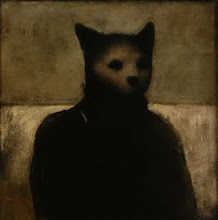 above: wally jay and son, leon
above: wally jay and son, leonReflecting a lot upon small-circle theory lately, especially with the passing of Wally Jay (see post below), I have come up with a few reasons why I think the small-circle concept holds water.
*small-circle jiu-jitsu is a style of MA where traditional japanese jiu-jitsu is used with a focus on quick, tight, circular movements (as opposed to larger, looser motions).
Here is a list of some of the positive aspects I see for myself regarding this style:
- pain and/or control comes on very fast
- very few telegraphing motions
- little effort required to achieve big results
- surprise factor (movements often shoot in at an attacker, which few thugs expect)
- sets up variety and/or flow (small techniques can readily be switched up as the commitment is less... ie. a big forward stance strike may be harder to reset into a throw, whereas a tight wrist lock can be turned into a throw or a dojo favourite where I train, the lock stays on during the throw. it'll make you feel sick, trust me....)

I have a couple old tapes from him. He seemed solid. I do not the emphasis on finger techniques though. You ever try to catch someone's fingers? Tough to train finger manipulations and go to work the next day too.
ReplyDeletetrue.... also, a broken finger will not slow down an attacker who is at all aggressive, but it shows the smallest principal of the circle... jay had some really good judo, too...
ReplyDelete